Member Login
E-mail: ISTM@ISTM.org
Office hours: Monday - Friday, 9.00 - 17.00 EDT (UTC-04)
July/August 2009

ISTM News
14th ICID - Miami, Florida, USA - March 9-12, 2010
Dear Colleagues:
 On behalf of the ISTM it is my great pleasure to invite you to attend the 4th Regional Conference of the International Society of Travel Medicine (RCISTM4). The Conference will be held in Miami, Florida March 9-12, 2010.
On behalf of the ISTM it is my great pleasure to invite you to attend the 4th Regional Conference of the International Society of Travel Medicine (RCISTM4). The Conference will be held in Miami, Florida March 9-12, 2010.
RCISTM4 will be conducted jointly as the II Congreso Latinoamericano de Medicina del Viajero (SLAMVI). It will take place just before and during the 14th International Congress on Infectious Diseases (ICID).
Our biennial RCISTM conferences serve as a venue to enhance the practice and science of travel medicine, to foster the growth of the discipline of travel medicine, and to support the growth of a regional travel medicine society, this time in Latin America. This marks the first time that ISTM has partnered with a Latin American regional partner, and we are particularly privileged to collaborate with SLAMVI.
SLAMVI together with the ISTM will oversee a program integrated into the 14th ICID. The program will highlight travel medicine issues in the Americas and beyond. The format will be of the calibre that you have come to expect of an ISTM meeting.
Miami has a vibrant cultural heritage and is truly a bilingual city. Recognizing the unique value of its traditions and current place as the crossroads of the Americas, it is a fitting location for a regional Latin American meeting that will attract attendees from all of the Americas.
By also partnering with the ISID, we can guarantee conference attendees a rich educational experience in the setting of a robust and well-established international forum.
We are also pleased to offer the Certificate in Travel HealthTM (CTH®) examination at the meeting. Since there will be limited seating for the exam, please act soon.
Alan J. Magill, MD
President, International Society for Travel Medicine (ISTM)
SLAMVI Chooses Latin America for Fourth Biennial Regional Conference
Dear Colleagues and Friends,
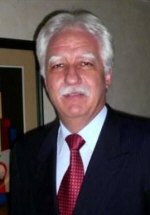 SLAMVI is immensely grateful to ISTM for having chosen Latin America as the region for their fourth biennial regional conference. ISTM’s main goal is to promote the growth of travel medicine as a prominent specialty in our region. This is a unique opportunity for SLAMVI to consolidate its scientific growth and membership by calling all specialists in Latin America to join our young society.
SLAMVI is immensely grateful to ISTM for having chosen Latin America as the region for their fourth biennial regional conference. ISTM’s main goal is to promote the growth of travel medicine as a prominent specialty in our region. This is a unique opportunity for SLAMVI to consolidate its scientific growth and membership by calling all specialists in Latin America to join our young society.
ISTM and SLAMVI will organize a program that will be part of the 14th ICID, focusing on all aspects of our rapidly developing discipline with a particular emphasis on the main issues of travel medicine in our region. Particularly on March 9th, we will have the opportunity to hold several sessions specially directed to Latin American specialists attending the II Congreso Latinoamericano. And in recognition of our languages, our partnering associations have honored us by having Spanish and Portuguese as the official languages of these sessions on that day.
On behalf of SLAMVI, our special thanks to ISID for their generous proposal for this joint meeting and their spirit of cooperation with our society. Holding a travel medicine meeting within the scope of a traditional infectious diseases conference will present the challenge of a wider audience, and thus a higher chance of fostering the development of travel medicine in the region. Also, holding a Latin American meeting in Miami constitutes a fabulous scenario for the Americas, as Miami is being increasingly acknowledged as a developing bridge across the whole continent.
We look forward to a meeting full of creative thinking and productive debate, which will also let us avail ourselves of the expertise of a relevant faculty and take back home new knowledge.
See you there! Nos vemos ahi!
Mario Masana Wilson, MD
President, Sociedad Latinoamericana de Medicina del Viajero (SLAMVI)
Preparations for 14th International Congress on Infectious Diseases
Dear Members, Colleagues, Sponsors and Friends:
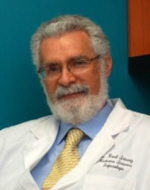 In this ever shrinking world where people, products and pathogens move rapidly around the globe, our collective expertise and experience will enable us to find answers to the infectious disease challenges confronting us all. It is in this shared spirit of scientific excellence and collegial collaboration that preparations have begun for the 14th International Congress on Infectious Diseases in Miami, in March. Building on the unqualified successes of our most recent biannual meetings in Lisbon and Kuala Lumpur, the ICID is delighted to return to North America.
In this ever shrinking world where people, products and pathogens move rapidly around the globe, our collective expertise and experience will enable us to find answers to the infectious disease challenges confronting us all. It is in this shared spirit of scientific excellence and collegial collaboration that preparations have begun for the 14th International Congress on Infectious Diseases in Miami, in March. Building on the unqualified successes of our most recent biannual meetings in Lisbon and Kuala Lumpur, the ICID is delighted to return to North America.
We are very excited about coming to Miami, an internationally recognized multicultural, multilingual and dynamic city that serves as a welcoming entry point into the United States. Miami also is home to outstanding universities and medical centers, and has a worldwide reputation as a pioneer city in international medicine and infectious diseases research and practice.
Whether you are a clinician, researcher, educator, public health official or practitioner of any of the disciplines that contribute to the care of patients with infectious diseases, please mark your calendars and make plans to join thousands of your colleagues from approximately 100 different countries at the Congress.
The 14th ICID will continue the unique educational approach that distinguishes our meetings from others, namely a scientific program that runs the spectrum from cutting edge science to state-of the-art practices to global infectious disease control. And all presented by a truly international faculty and attended by participants whose diverse backgrounds create an incomparable opportunity for the worldwide exchange of information for the benefit of our patients and societies.
Plenary lectures by world leaders in infectious disease and microbiologic research, clinical practice and health policy will be complemented by symposia organized, moderated and presented by experts in their respective fields. And there will be interactive meet-the-professor sessions headed by engaging faculty as well as daily oral and poster presentations based on submitted abstracts.
Importantly, the Congress allows members to renew and expand their participation in the Society and non-members to become members that contribute to its future. The Congress also provides a perfect environment for stimulating intellectual exchange and camaraderie, essential elements for the creation of new ideas and partnerships.
We look forward to your participation and to working together on the world's premier multispecialty global infectious diseases conference.
Raul E. Isturiz, MD, FACP
President, International Society for Infectious Diseases
ISTM Committee Reports
Training and Education in Travel Health (Not Exhaustive) Prepared by Sandra Grieve and Lin H. Chen


A workshop on education and training in travel medicine was held at the CISTM11 in Budapest. The aim was to understand the general organization of courses and training opportunities in travel medicine, to identify the goals and strengths of each training program and to search for training opportunities to meet individual interest and needs. Concurrently, the ISTM Course Committee developed and distributed a survey to delegates to identify aspects of experience, country of practice and the need for Travel Medicine training. The results of this survey will form the basis for future training and educational programs. Some available courses on Travel Medicine are listed below, although not exhaustive.
| UK | |||
| Annual Conferences | Content | Contact | Website |
|---|---|---|---|
| The Royal College of Nursing (UK) Travel Health Forum (RCN THF) | Annual one day conference covering varied and topical aspects of travel health | RCN Events Rcn.events@rcn.org.uk |
www.rcn.org.uk/events |
| British Travel Health Association (BTHA) | Annual one day conference covering varied and topical aspects of travel health | Diane Jones BTHA, PO Box 336 SALE M33 3UU UK |
www.btha.org |
| Medical Advisory Service for Travellers Abroad (MASTA) | Annual study day covering varied and topical aspects of travel health | medical@masta.org | www.masta.org |
| Short Courses | |||
| TREC (Travel Health Related Education and Care) | 2 day workshops + Update days | Sheila Hall +44 (0) 1360 770 829 sckhall@TRECtravelhealth.co.uk | www.TRECtravelhealth.co.uk |
| London School of Hygiene & Tropical Medicine (LSHTM) | Annual 5 day course | Ms Shabeo Chopra +44 (0) 20 7299 4648. shortcourses@lshtm.ac.uk. |
www.lshtm.ac.uk |
| LSHTM | Online course - Continuing Professional Development | Registry LSHTM as above + 44 (0) 20 7299 4648 |
www.lshtm.ac.uk |
| Liverpool School of Tropical Medicine (LSTM) | Annual 5 day course | Laura Hand +44 ( 0) 151 705 3208 |
www.liv.ac.uk |
| Leeds Metropolitan University Faculty of Health | Combined online/study day and competence development | Course Administrator: +44 (0) 113 8121927 cpdenquiries@leedsmet.ac.uk |
www.leedsmet.ac.uk |
| Formal Academic Courses | |||
| Foundation Course in Travel Medicine (HPS and RCPSG) | Six months - intake May & November | + 44 (0) 141 300 1132 Fax: +44 (0) 141 300 1170 TMdiploma@hps.scot.nhs.uk |
|
| Diploma in Travel Medicine (HPS and RCPSG) | Distance learning - 3 Modules Full Calendar year (March) | +44 (0) 141 300 1132 Fax: +44 (0) 141 300 1170 TMdiploma@hps.scot.nhs.uk |
Contact Course Convener for suitability +44 (0) 141 300 1134 Fax: +44 (0) 141 300 1170 Lorna.Boyne@hps.scot.nhs.uk |
| MSc in Travel Health and Medicine (University College London) |
Interactive distance learning x 3 years online/DVDs/video/audio-visual and compulsory virtual seminars with tutor |
+44 (0) 20 7794 0500 x33546 a.dickens@medsch.ucl.ac.uk |
www.ucl.ac.uk |
| MSc/PgDip/PgCert International and Travel Health Sheffield Hallam University | Part-time and distance learning | +44 (0) 114 225 2373 Fax + 44 (0) 114 225 2394 pep-enquiries@shu.ac.uk |
prospectus.shu.ac.uk |
The following are a sampling of regularly recurring programs and not a comprehensive listing. The programs below offer CME or equivalent accreditation. Information on programs with CEU accreditation are being collected by Gail Rosselot, NP, MPH and will be posted on the Nurses Professional Group (NPG) web site in the near future. Many other courses and programs are listed on the ISTM web site under Conferences.
| USA | |||
| ISTM and Mount Auburn Hospital CTH® and Travel Medicine Update |
2-day course with lectures, mock tests; provides CME and CEU accreditation; held annually | istm@istm.org | www.istm.org |
| University of Washington Update, Travel Medicine & Global Health |
2-1/2 day course with lectures and workshops; provides CME and CEU; held every 2 years | casanfo@u.washington.edu | www.uwcme.org |
| CANADA Program Director | |||
| Montreal | 2-day course in French/English; held annually | Dominique Tessier, MD | |
| McGill Tropical Medicine Update Montreal* |
3-day tropical disease update; held every other year | Michael Libman, MD | www.medicine.mcgill.ca |
| Public Health of Winnipeg and Calgary | 2-day update; held annually | ||
| University of Toronto | 1-day update; held every other year | Jay Keystone, MD | |
| Victoria, British Columbia* | Tropical medicine course | Wayne Ghesquire, MD | |
| FRANCE | |||
| Hopital Pitie-Salpetriere (in French) |
Weekly course of 3 hours for senior doctors; held through one university year | Eric Caumes, MD | |
| GERMANY | |||
| Ludwig-Maximilians Universitat Munchen (in German) |
Short course for physicians | Hans Nothdurft, MD | www.med.uni-muenchen.de |
| SWITZERLAND | |||
| Swiss Tropical Institute and University of Zurich Reisemedizin (in German) |
2 afternoons in November/December; held annually | Christoph Hatz, MD | www.sti.ch |
| SOUTH AFRICA | |||
| Certificate in Competence in Travel medicine | 5-day course including lectures, case studies, and examinations | Ms Lea Lourens sastm@wirelessza.co.za | www.sastm.org.za |
*Focus on tropical medicine/post-travel evaluations.
Professional Education Committee (PEC)
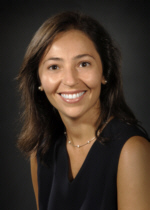
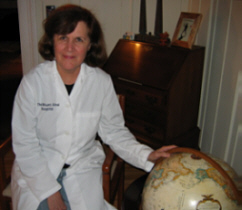
Starting with the next issue of NewShare, PEC will provide a new feature for ISTM members, JournalWatch. This will be an annotated bibliography of new and noteworthy travel health articles. In each issue, articles from peer-reviewed journals other than JTM will be highlighted for their value to travel medicine knowledge and practice. Articles will come from a number of peer- reviewed journals including: the New England Journal of Medicine, Journal of the American Medical Association, Lancet, Lancet Infectious Diseases, Travel Medicine and Infectious Diseases, Emerging Infectious Diseases, Mortality and Morbidity Weekly Report, the British Medical Journal, and Clinical Infectious Diseases.
ISTM Professional Education Committee members Dalilah Restrepo MD and Gail Rosselot NP have volunteered to initiate this series.
We welcome your suggestions. Travel health content now appears in many professional journals and we appreciate your help in identifying ones of special note. All members are encouraged to recommend articles for future consideration and to contribute annotations for the feature. To add to our list of regularly reviewed journals, we would especially like to hear from pharmacists, public health experts, nurses, and members involved with refugees and immigrants and with adventure travel.
Please send suggestions and comments about ISTM JournalWatch to garosselot@aol.com or drdalirestrepo@gmail.com.
Publications Committee
 I am pleased to announce that the impact factor for Journal of Travel Medicine has risen from 1.048 to 1.492! Congratulations are in order for our editor-in-chief, Robert Steffen, and his able assistant, Gaby Bossard, as well as our hard working contact at Wiley Blackwell, Elaine Musgrave. I remind everyone who publishes in ANY Journal, not only the Journal of Travel Medicine, that it remains important to quote relevant JTM articles from the two years prior to the publication of your article. This helps the impact factor immensely.
I am pleased to announce that the impact factor for Journal of Travel Medicine has risen from 1.048 to 1.492! Congratulations are in order for our editor-in-chief, Robert Steffen, and his able assistant, Gaby Bossard, as well as our hard working contact at Wiley Blackwell, Elaine Musgrave. I remind everyone who publishes in ANY Journal, not only the Journal of Travel Medicine, that it remains important to quote relevant JTM articles from the two years prior to the publication of your article. This helps the impact factor immensely.
Currently the Publications Committee is exploring ways by which to guarantee that industry-driven or related articles have received appropriate ethical review. We are also reviewing the recent submission by the Professional Education and Training Committee of a monograph on beginning and running a travel clinic which we hope to post soon on the website for all to use.
Our first Expert Reviews of Evidence Bases for Clinical Practice have now been published. Kudos goes to Dr. DuPont who was the writing panel chair for the reviews on prevention and treatment of travelers' diarrhea. Larry Goodyer is currently busy spearheading an expert review on personal protective measures. While our ISTM mission statement includes developing "practice guidelines", it appears developing evidence-based expert reviews on subjects might be a more politically expedient approach to serving our membership. The Executive Board has empowered a task force to review the entire process of developing expert reviews to guarantee the approach of choosing topics and writing teams is optimally transparent and representative.
Hans Dieter Nothdruft and a select ad hoc committee are reviewing technical aspects of our website in hopes of making it more modern looking and easier to access by all devices.
Karl Neumann continues to do an excellent job editing NewsShare. He urges all to continue to submit interesting material. Committee chairs are now expected to contribute news to our membership on a regular basis.
As usual if you have any concerns or ideas about our publications or website, please contact me at <charles.d.ericsson@uth.tmc.edu>. Particularly if you find mistakes, stale material or poorly functioning links, please let us know.
Respectfully submitted,
Charlie Ericsson, MD
Chair, ISTM Publications Committee
Examination and Certification Committee
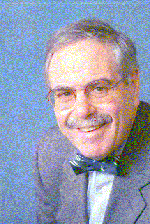 The Examination and Certification Committee welcomed 232 examinees who sat for the Certificate in Travel HealthTM (CTH®) examination in Budapest. When we planned this exam a few years ago, we estimated there might be as many as 100 who would take the exam, so you can imagine how excited we were to have more than 200 examinees!
The Examination and Certification Committee welcomed 232 examinees who sat for the Certificate in Travel HealthTM (CTH®) examination in Budapest. When we planned this exam a few years ago, we estimated there might be as many as 100 who would take the exam, so you can imagine how excited we were to have more than 200 examinees!
The Exam Committee met in Budapest at CISTM11 and is now making plans to continue giving the exam on an annual cycle - March 2010 in Miami at the Regional ISTM meeting with SLAMVI (South American Travel Medicine Group) and ISID, and in May 2011 at CISTM12 in Boston.
Those who have successfully earned the CTH® designation proudly display it as a mark of distinction. If you haven't yet taken the exam, please consider joining us in Miami or Boston.
Kenneth Dardick MD, Chair
Examination and Certification Committee
Journal of Travel Medicine Committee
 Good news from the JTM Editor's desk.
Good news from the JTM Editor's desk.
In the past year, major progress has been made with respect to timelines. Since 2004 the period from receipt of a manuscript through peer-review to an initial decision has been reduced from 100 days to less than 40. Time from submission to publication is still 235 days. However, a large proportion of these eight months is spent by the authors in making revisions of their manuscripts.
The major progress is that we recently introduced Early View. Generally, in less than a month after submission of the final manuscript and of the Conflict Of Interest Declarations (COID) by all the authors, the article is available online on the Internet and can be referenced accordingly. For articles of particular urgent relevance, a new Fast Track can be requested.
To reduce the backlog in accepted articles in the queue for publication, we have added pages to several issues. To cover the additional costs, as per the revised Instructions for Authors. We will now charge authors for articles which exceed a certain number of pages. Articles with a 'normal' length continue to be free of charge.
In JTM 16.3, two Expert of Evidence Bases for Clinical Practice have been published, both in the domain of travelers' diarrhea. We are most grateful to Herbert L. DuPont and his co-authors for having set the stage in this new category of articles. A third one on measures against mosquito bites will follow shortly.
The rate of our rejecting submitted articles has steadily increased from 24% in 2003 to 45% in the past year. This is due to the fact that the reviewers have been requested to increase the quality of the accepted articles. Despite that - as communicated some time ago - the impact factor of the journal in 2007 had transiently decreased to 1.048. But the latest news is that in 2008 it went to a new record 1.492. Members can help to further improve this number by including JTM articles from the previous two years (2008 and 2009 for articles to be published in 2010) in their reference lists everywhere, not only in JTM.
Going forward we will select the best articles for annual awards, with a total sum of $5000 distributed. The winners selected by the
Journal of Travel Medicine Awards Committee (Herbert L. DuPont, David R. Shlim and Ron Behrens) for 2008 are:
Original Articles:
Nurthen NM, Jung P.
Fatalities in the Peace Corps: A retrospective study, 1984 to 2003.
J Travel Med 2008;15:95-101
Brief Communications:
Munoz J, Vilella A, Domingo C, Nicolas JM, de Ory F, Corachan M, Tenorio A, Gascon J.
Yellow fever-associated viscerotropic disease in Barcelona, Spain.
J Travel Med 2008;15:202-5
Reviews (2 winners):
Fangtham M and Wilde H.
Emergence of Salmonella paratypi A as a major cause of enteric fever: Need for early detection, preventive measures and effective vaccines.
J Travel Med 2008;15:344-50
Pavli A and Maltezou HC.
Travel-acquired leptospirosis.
J Travel Med 2008;15:447-53
Robert Steffen,
Editor, Journal of Travel Medicine
Expert Opinion
Expert Opinion Case 2009-1
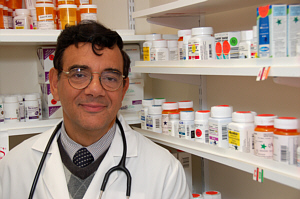
A 38-year-old female presents to your office with a positive tuberculin skin test (TST) of 12 mm at 48 hours. She was born in Mexico and had Bacille Calmette-Guerin (BCG) vaccination in childhood.
She is opening a home daycare and the TST was placed as part of the application process with the Department of Public Health. She is otherwise in excellent health with a 4-year-old child of her own. She travels back to Mexico yearly to visit friends and relatives but does not recall any known recent exposure to persons with tuberculosis.
Would you recommend any supplemental testing to determine true latent exposure to TB versus prior BCG immunization? Assuming true latent exposure to Mycobacterium tuberculosis is documented, would initiation of treatment for latent tuberculosis be appropriate?
Objective:
Describe the role of Interferon gamma release assays (IGRAs) in screening BCG-vaccinated patients with positive TST.
The issue of latent tuberculosis diagnosis is a commonly encountered problem in many fields, including more than just infectious diseases and travel medicine. The problem is made more difficult in determining the potential presence of true latent tuberculosis infection among patients with a positive tuberculin skin test (TST), who had also received BCG vaccination sometime during childhood. Since the various BCG vaccine preparations vary in efficacy and are not 100% protective, the positive TST may reflect more than simply prior BCG vaccine administration. That is the essential issue presented here. Is this woman latently or even actively infected with Mycobacterium tuberculosis and what do we do if she is?
I will answer the last question first. If we are convinced that this woman, born in Mexico, returning for yearly visits, mother of a young child and with the potential for future pregnancy, is about to open a day care center and is latently infected with M. tuberculosis then I would treat her for nine months with standard isoniazid prophylaxis. I will assume that neither her symptoms, physical findings nor chest radiograph suggest active tuberculosis at this point. But we should know that first.
The TST is sensitive (75-95%) in detecting latent or active infection with M. tuberculosis in immunocompetent individuals. How does one interpret a TST in a person who was previously vaccinated with BCG? The TST is considered 95% specific if one has not received BCG in the past, but specificity of the TST and its positive predictive value drop considerably if one has received BCG vaccine in the past. By how much?
At one recent ISTM 11 Symposium in Budapest1 Dr. Lisa Keep presented the following relevant information regarding the influence of test sensitivity, specificity and, most importantly, the prevalence of a given disease on the positive predictive value of a sample theoretical test. So, how likely is it that a positive test with a sensitivity of 90% and specificity of 95% will be a true positive when the prevalence of a disease is low (5%) in the population being tested? Line 1 in her table (below) indicates a value of 48.6%, meaning less than half the positives for this test represent true positives or the presence of the disease in question. However, if the prevalence of disease in the tested population is much higher, say 50% as shown in line 2, then the positive predictive value reaches 94.7%. Line 3 shows that at a very low prevalence of disease (1%) the same test only has a positive predictive value of 15.4 % and line 4 demonstrates that even increasing the specificity to 98% for the test will only bring up the positive predictive value to 32%.
| Prevalence | + Predictive Value (%) | Sensitivity (%) | Specificity (%) | |
|---|---|---|---|---|
| 1] | 5% | 48.6 | 90 | 95 |
| 2] | 50% | 48.6 | 90 | 95 |
| 3] | 1% | 15.4 | 90 | 95 |
| 4] | 1% | 31.3 | 90 | 98 |
The problem with the TST in patients who have been administered BCG is that it can influence the specificity of the TST. The TST could be positive in those who were vaccinated with BCG. As a general rule the TST specificity of 95% is said to remain at that level if an individual were vaccinated with BCG below one year of age. If vaccinated between the ages of one and five years, when later evaluated with a TST, the specificity may only be 85%. If vaccinated with BCG after age 5, TST test specificity can be as low as 75%. At that point we have a real problem, especially if the prevalence of tuberculosis is also low. This would be equivalent to what is illustrated in line 1 (above) where the prevalence of disease is 5% and the positive predictive value is less than 50% despite relatively high test sensitivity (90%) and specificity (95%).
We do not know when our patient was vaccinated with BCG, but we might assume a best-case scenario in discussing her skin test results. Assume the BCG was administered at birth, and she is from an area in Mexico endemic for tuberculosis, say where the prevalence of latent tuberculosis is greater than 20%. Her TST result will have a high predictive value for the presence of latent tuberculosis. If, however, she was vaccinated after age 5, specificity of the TST is lower, and if she also comes from a part of Mexico or its population for which latent tuberculosis prevalence is less than 20%, the positive predictive value of her TST drops below 50%. If this is the case for her, then we do not know if she is truly latently infected with M. tuberculosis. The chest radiograph may help us to evaluate her, but we should assume for the sake of discussion that it was completely normal. We need another test here.
The basis for interferon g release assays (IGRAs) is that T-cells produce interferon g when exposed specifically to a Mycobacterium tuberculosis antigen, if they had been previously sensitized. These specific antigens are absent in most environmental mycobacteria and most importantly all strains of BCG vaccine. Therefore a positive IGRA result should be secondary to actual Mycobacterium tuberculosis exposure and not BCG vaccination. The advantage of such a system is that it minimizes the rate of false positive tests that lower the specificity of the TST due to prior BCG immunization.
Vinton et al recently studied 358 hospital staff members from 5 hospitals in Melbourne, Australia with both a TST and the QuantiFERON-TB Gold In-Tube (QFT-In Tube) test. Results were often discordant, and when the TST test was positive and the QFT-In Tube was negative this was strongly associated with prior BCG vaccination, and having a hospital role that involved patient contact. The QFT-In Tube test in this population of health care workers was better able to identify those with true latent tuberculosis infection and lowered the number of false positive test results that were associated with prior BCG vaccination.
The above Vinton study was reviewed for Travel Medicine Advisor in April 20093 and it was noted that a positive IGRA result should be secondary to actual Mycobacterium tuberculosis infection, and not BCG vaccination. The occasional indeterminate result occurred in those who are immunosuppressed, or at the extremes of age, which is not the case for our patient. Since 2005, the Centers of Disease Control in the USA indicated that IGRAs could be used in all circumstances in which the TST is used, including the evaluation of recent immigrants.
I therefore favor the use of IGRA testing for our patient to more confidently determine if she is latently infected with M. tuberculosis. If her IGRA is positive it would warrant prophylaxis, given her plans for future employment and the known efficacy of isoniazid monotherapy at greatly reducing lifetime risk of reactivation tuberculosis. If the IGRA results were negative I would not favor prophylactic therapy and would attribute her positive TST to prior BCG vaccination. Her 4-year-old child might also be a candidate for TST testing, if not already vaccinated with BCG. Although IGRAs are not as sensitive as the TST in children who are younger than age 2, one could also be used here to evaluate this child if the mother is proven to be infected. For a discussion of the use of IGRAs in travelers the reader is referred to a recent review in the Journal of Travel Medicine by Ingram et al. It represents a somewhat different situation than the case presented here but provides an excellent review of the status of IGRA testing in general.5
Are we already too late for IGRA testing? Will the administration of the TST in our patient have turned the IGRA positive? Recent discussions surrounding this issue at the 11th Conference of the ISTM in Budapest during the presentation by Dr. Keep leaned towards this not being the case. Therefore, although one cannot completely rule out that possibility i.e. that a positive IGRA result might occur in our patient following her having received a TST, emerging studies including the Vinton study cited above, also suggest this not to be the case. In this study patients received both TST and IGRA testing and the IGRA still proved useful in sorting out true latent Mycobacterium tuberculosis infection versus prior immunization with BCG.
In summary, this case needs resolution, given the risks that potential reactivation of latent tuberculosis might post to our patient, her family and her clients in daycare. If proven to be latently infected, I feel she should be offered prophylaxis. The TST alone, in this BCG-vaccinated woman from Mexico, does not have sufficient positive predictive value for us to embark upon prophylaxis based solely upon her positive test result. IGRA testing offers both increased test specificity for M. tuberculosis and positive predictive value for latent infection. It will allow us to make this decision in a more definitive and confident manner.
References:
1] Keep L. Positive TB screening test results in asymptomatic individuals - What to do? Abstracts of the 11th Conference of the International Society of Travel Medicine. May 24 -29, 2009 Budapest, Hungary. SY09.o3, p. 57.
2] Vinton P, Mihrshahi S, Johnson P et al. Comparison of QuantiFERON-TB Gold In-Tube test and tuberculin skin test of identification of latent Mycobacterium tuberculosis infection in healthcare staff and associate between positive test results and known risk factors for infection. Infect Control and Hosp Epidemiology 2009;30:215-221.
3] Scully ML. Interferon gamma release assays for detection of latent tuberculosis infection. Travel Medicine Advisor 2009;19 No.4:21-22.
4] Maszurek GH, Jereb J, Lobue P et al. Guidelines for using the QuantiFERON-TB Gold test for detecting Mycobacterium tuberculosis infection, United States. MMWR Recomm Rep 2005;54 (RR-15):49-55.
5] Ingram PR, Fisher DA, Wilder-Smith A. Latent tuberculosis infection in travelers: Is there a role for screening using interferon-gamma release assays? J Travel Medicine 2009;16 (2) published online in advance of print.
Mary Louise Scully and Nancy Jenks have edited an Expert Opinion scenario written by Frank Bia.
Travel Medicine News
ISTM Pharmacist Professional Group Organizes at the CISTM Meeting in Budapest
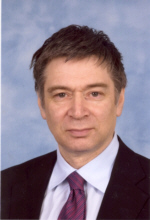 Along with physicians and nurses, pharmacists have for some years been the third major professional group that is represented in the membership of the ISTM.
Along with physicians and nurses, pharmacists have for some years been the third major professional group that is represented in the membership of the ISTM.
In the UK, Canada and the U.S. there has been a growing trend for pharmacists to become directly involved in the delivery of pre-travel medicine services. It therefore seemed to be an ideal opportunity to initiate a pharmacist professional group at the recent CISTM meeting in Budapest. Many pharmacists were in attendance, some in order to take the Certificate in Travel Medicine exam which was given in conjunction with the CISTM meeting. An open forum was held to gauge the interest of pharmacists in starting a Pharmacist Professional Group within ISTM. The event was attended by 10 pharmacists and also a nurse and physician, which gave a useful multi-disciplinary prospective.
During the meeting, a fair amount of time was spent discussing the current role of pharmacists and how this role may evolve in the coming years. It was well recognised that travellers do consider pharmacists as not only an important resource for advice but also as a source for obtaining necessary health-related supplies.
Pharmacists from the UK, US and Canada described their experiences with pharmacist-operated travel clinics, including vaccination services and the prescribing of preventative medications such as anti-malarials, and that such services could increase significantly in the near future. The assembled group agreed that travel medicine must be a significant portion of the pharmacist's practice to enable pharmacists to provide a high level of care. The venues described for the pharmacist's practice included community pharmacies and ambulatory care clinics. It is these pharmacists in these settings that are likely to be interested in joining ISTM. Other types of pharmacists who may be involved in travel medicine included those working in medical informatics, academia, hospitals and industry.
A few initial concepts regarding the purpose and function of an ISTM pharmacist professional group were identified:
- To create a group within ISTM to represent the interests and practice of travel medicine pharmacists and to provide a forum for networking.
- To produce a consensus paper to define and describe the role of the pharmacist in the provision of travel medicine. This might include a discussion of the scope of practice of pharmacists around the world for the delivery of travel medicine services. It would also be an opportunity to define best practices for the provision of pre-travel services by pharmacists and the site in which they practice.
- To promote the recognition and expansion of the pharmacist's role in travel medicine.
- To provide a link to other national and international pharmacy bodies to promote travel medicine and the ISTM.
- To maximise networking opportunities for education and research.
- To provide representation of pharmacists to the executive committee of the ISTM.
Having decided that such a professional group was viable and worthwhile, the next step would be to form a database of all current ISTM pharmacist members who are interested in joining the professional group. This will be achieved through the next membership renewal cycle where the form will contain a tick box to indicate that the pharmacist wishes to join.
In the meantime we would be happy to hear from any pharmacists who are interested in joining or from anyone else who has further thoughts about this new venture.
Prof. Larry Goodyer (LGoodyer@dmu.ac.uk)
Jeffery A. Goad, Pharm.D., MPH (goad@usc.edu)
First Travel Medicine Textbook in Hungarian
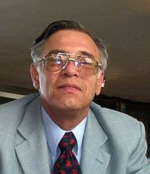 Everything you ever wanted to know about travel medicine in Hungarian and did not know who to ask you can now find in Utazasi Orvostani Ismeretek Gyogyszereszeknek. This is the first comprehensive travel medicine textbook in that language, published earlier this year. The author is Peter Felkai, MD, PhD, and a member of the ISTM. The book has 416 pages and contains 102 figures/pictures, 119 tables and more than 500 citations.
Everything you ever wanted to know about travel medicine in Hungarian and did not know who to ask you can now find in Utazasi Orvostani Ismeretek Gyogyszereszeknek. This is the first comprehensive travel medicine textbook in that language, published earlier this year. The author is Peter Felkai, MD, PhD, and a member of the ISTM. The book has 416 pages and contains 102 figures/pictures, 119 tables and more than 500 citations.
The book's target audience is pharmacists first, and then physicians. In Hungary, few travelers going abroad visit physicians, said Peter, who has been involved in travel medicine and assistance and evacuation insurance issues for many years. Instead, most travelers go to their pharmacists before leaving home and ask for medications to take with them in case they become ill abroad. Therefore, to reduce morbidity and mortality among Hungarian travelers, the prime group to educate has to be the pharmacists. (A textbook on travel medicine written for physicians is scheduled to be issued in 2010. Peter will be the editor. There will be ten contributing editors, all experts on different aspects of travel-related medical subjects.)
Utazasi Orvostani Ismeretek Gyogyszereszeknek is printed on glossy paper and has clear, sharp multicolored tables, pictures and maps. All the usual subjects in travel medicine are covered: vaccination, malaria, travelers' diarrhea, plus numerous other common and not-so-common travel-related diseases. Also discussed, and perhaps more so than in most such texts in other languages, are the prevention and treatment ofsports injuries, in-line skating, trampoline use and Nordic walking, for example. Hungarians, says Peter, often travel abroad to participate in sports not readily available at home, such as skiing, mountain climbing and water sports. Some take extreme risks (excessive exercising in hot climates, for example) without knowing the consequences.
My mission, says Peter, is to make sure that Hungarians come home from their holidays safe and healthy so that they will want to and be able to travel again.
